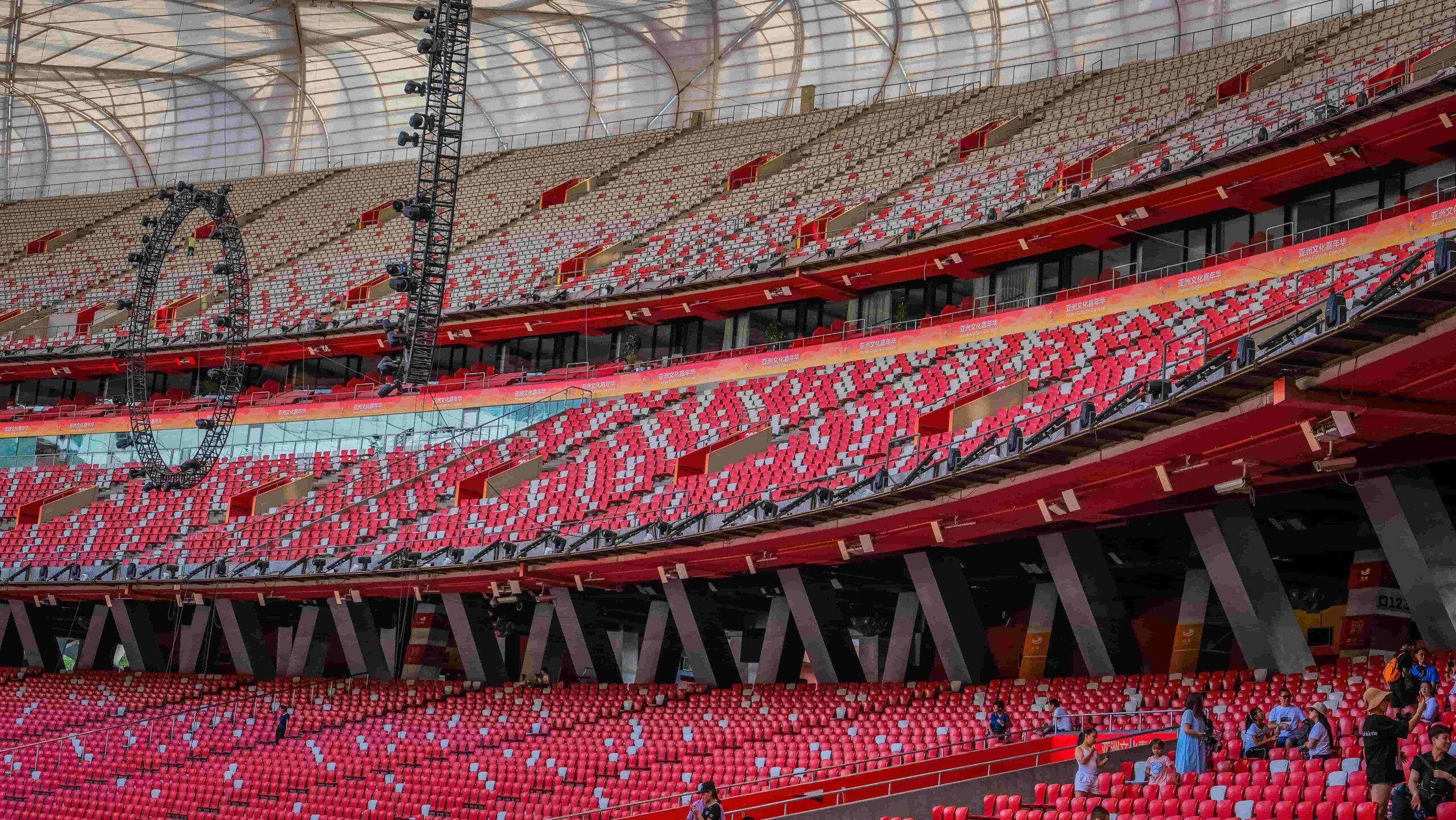Introduction:-.Narendra Modi Stadium, formerly known as Sardar Vallabhbhai Patel Stadium, is a cricket stadium situated in Ahmedabad, India. Renamed in honor of the current Prime Minister of India, Narendra Modi, the stadium is a testament to India’s rich sporting heritage and its commitment to hosting world-class events. Spread across a sprawling 63 acres, this stadium is not only the largest in India but also one of the most impressive cricket venues globally.
Historical Background:
The story of Narendra Modi Stadium dates back to 1982 when it was initially constructed. Named after the Iron Man of India, Sardar Vallabhbhai Patel, the stadium has undergone several renovations and transformations over the years to evolve into the state-of-the-art facility we see today. In 2020, the stadium was officially renamed after Narendra Modi, highlighting the Prime Minister’s contribution to the nation and the sport of cricket.
Architectural Marvel:
One of the most striking features of Narendra Modi Stadium is its architectural brilliance. The stadium was redesigned and reconstructed by renowned architects Populous, a firm with a global reputation for designing iconic sports venues. The new design was unveiled in 2020, and it has since become a symbol of India’s progress in modern architecture.
The stadium’s standout feature is its seating capacity. With a capacity exceeding 132,000, it surpasses the Melbourne Cricket Ground, making it the largest cricket stadium in the world. The design incorporates innovative elements to ensure an optimal viewing experience for spectators, including state-of-the-art seating arrangements, excellent sightlines, and modern amenities.
Facilities and Amenities:
Narendra Modi Stadium is not merely a cricket ground; it is a multifaceted facility that caters to a diverse range of sports and entertainment events. The stadium boasts world-class facilities, including spacious dressing rooms, top-notch training facilities, and media rooms equipped with the latest technology. The construction of the stadium also prioritized sustainability, incorporating eco-friendly features such as rainwater harvesting and solar panels.
The stadium’s spectator facilities are second to none. Comfortable seating, wide concourses, and numerous food and beverage options ensure that fans have a memorable experience. The stadium is also equipped with advanced security measures and medical facilities to address any unforeseen circumstances during events.
Day-Night Cricket and the Pink Ball Test:
Narendra Modi Stadium gained international attention for hosting the third Test match between India and England in February 2021. This Test was historic not only for being the first-ever international match at the newly renovated stadium but also for being a day-night Test using the pink ball. The introduction of day-night Test cricket in India marked a significant shift in the traditional format, aiming to attract larger audiences and create a more engaging spectacle.
The event was a massive success, with the renovated stadium proving to be a fitting venue for the historic occasion. The pink ball test match drew widespread praise for its entertainment value, bringing a new dimension to the sport in the subcontinent.
The Ahmedabad Experience:
Beyond the sporting events, Narendra Modi Stadium has also positioned Ahmedabad as a prominent destination for international cricket and entertainment. The city’s infrastructure and hospitality industry have experienced a significant boost due to the influx of visitors attending matches and events at the stadium. This has not only contributed to the local economy but has also elevated Ahmedabad’s status on the global stage.
Global Recognition and Awards:
The redevelopment of Narendra Modi Stadium has garnered international acclaim and recognition. The innovative design and engineering excellence have earned the stadium several prestigious awards, further solidifying its status as a world-class sporting facility. The accolades received include recognition for sustainable design practices, architectural innovation, and contributions to the overall development of the sporting landscape.
Future Prospects and Legacy:
Narendra Modi Stadium’s impact extends beyond the present, as it sets the stage for the future of cricket in India. The stadium’s massive capacity and cutting-edge facilities make it an ideal venue for hosting major international tournaments, including World Cups and other global events. This not only enhances India’s reputation as a cricketing powerhouse but also positions the country as a frontrunner in organizing and hosting major sporting events.
The legacy of Narendra Modi Stadium is not limited to cricket alone. Its role in promoting sports culture and infrastructure development serves as an inspiration for aspiring athletes and sports enthusiasts across the nation. The stadium stands as a symbol of India’s commitment to excellence in sports, showcasing the country’s ability to blend tradition with modernity.
Conclusion:
Narendra Modi Stadium stands as a shining example of India’s dedication to fostering world-class sports facilities. From its rich history to its cutting-edge design and state-of-the-art facilities, the stadium has become an integral part of India’s sporting legacy. As it continues to host marquee events and contribute to the growth of cricket in the country, Narendra Modi Stadium will undoubtedly remain a beacon of excellence in the world of sports and architecture.
Top of Form



